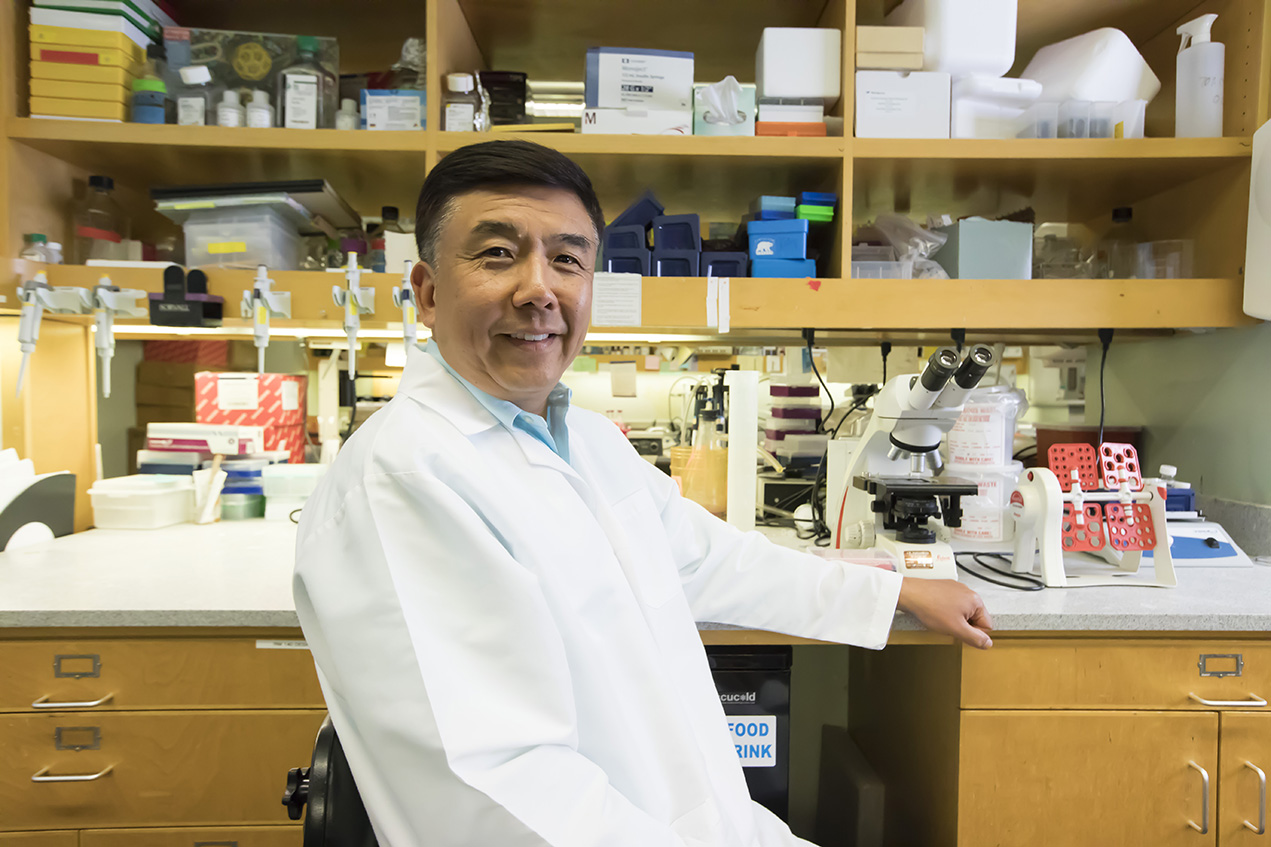If a global pandemic was meant to slow researchers down in their quest for knowledge, no one told the research teams working in Ostrow’s lab spaces across both campuses.
This year, the Herman Ostrow School of Dentistry of USC has been ranked the fourth highest-funded U.S. dental institution by the National Institute of Dental and Craniofacial Research (NIDCR), jumping from No. 13 in 2019.
“It shows an incredible amount of trust for us to be able to get this support, which enables us to carry out innovative research projects that can truly benefit our patients,” said Associate Dean of Research Yang Chai, PhD, DDS.
The top-funded grants
This past year, the top-funded NIDCR grants to USC researchers were those supporting FaceBase III, a central repository for craniofacial datasets and tools meant to advance craniofacial science that USC has been leading since 2014; a research project examining the role of herpesvirus in oral inflammatory diseases such as periodontitis, peri-implantitis and mucositis; a research project seeking to better understand the mechanisms whereby immune-compromised individuals develop malignant tumors from Kaposi’s sarcoma-associated herpesvirus and Epstein virus in an effort to one day prevent them; and a training grant meant to support PhD students and postdoctoral fellows in their research.
But it was the funding provided for the Center for Dental, Oral and Craniofacial Tissue and Organ Regeneration (C-DOCTOR) — whose third phase launched during the pandemic —that helped propel Ostrow to the No. 4 ranking.
Led by USC, C-DOCTOR is a consortium of California academic institutions whose mission is to become a sustainable, comprehensive national center that enables the clinical translation of innovative regenerative therapies to replace dental, oral and craniofacial tissues or organs lost to congenital disorders, traumatic injuries, disease and medical procedures.
Chai is a principal investigator of C-DOCTOR, alongside UC San Francisco’s Jeffrey Lotz.
“C-DOCTOR has been an incredible opportunity for us to work with so many talented people,” said Chai, who is a University Professor, the George and MaryLou Boone Chair in Craniofacial Biology and the Director of the Center for Craniofacial Molecular Biology (CCMB). “We have eight different institutions working together to identify these interdisciplinary translation research projects, foster their development and help them move into an FDA filing. It allows us to really translate innovative discoveries into patient care.”
Science in the time of COVID
When the pandemic led to massive shutdowns across California in early 2020, research efforts at CCMB and the Norris Dental Science Center temporarily slowed, with individual scientists dropping in to make sure equipment was running and animal studies were undisturbed.
In June 2020, USC ramped up its research operations to 30 percent occupancy and eventually to 50 percent, thanks in part to health and safety guidelines created by an Ostrow task force led by Chai.
At the time, the University had tasked each school with putting together a back-to-work plan that comported with guidelines developed by the Centers for Disease Control, the County of Los Angeles and the University of Southern California.
Ostrow’s task force, which included faculty members from the USC Chan Division of Occupational Science and Occupational Therapy and the USC Division of Biokinesiology and Physical Therapy, put together a plan so comprehensive that parts of it were adopted university-wide.
Today, research efforts are once again back at 100%, with all of the necessary COVID-19 mitigation efforts in place, which also includes late-night shift work.
During each phase of the re-opening Ostrow’s research team was incredibly resilient and adaptable, Chai said.
“Never did people say, ‘Oh, you know what? This is not convenient for me.’ It was always ‘When can I come in?’ ‘When is it my turn?’ Chai explained. “That’s how we’ve been able to publish all these studies and carry out new research projects like the ones funded by C-DOCTOR. That’s been truly remarkable — to see how innovative people have been to come up with ways to deal with restrictions.”
— John Hobbs


